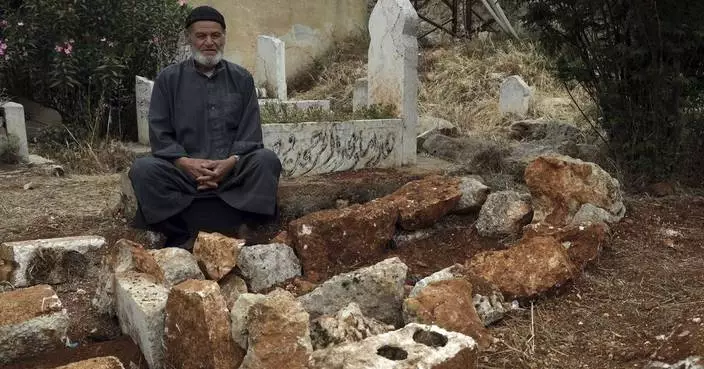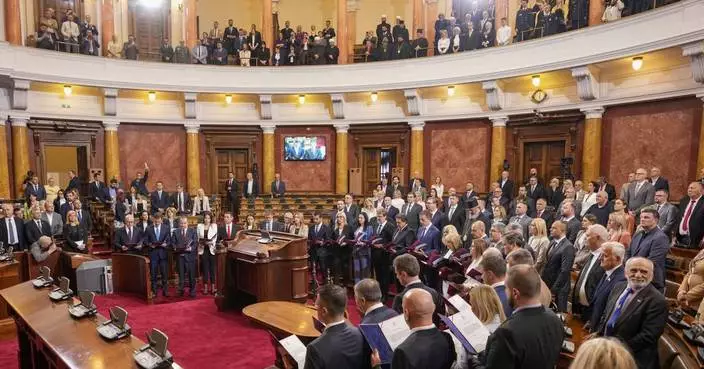Melania Trump announced Tuesday that her longtime spokesman and confidante will succeed Sarah Sanders as White House press secretary.
Stephanie Grisham has been with President Donald Trump since 2015, when he launched the presidential campaign. She will also take on the role of White House communications director, a strategic and forward-looking role that has been vacant since March. Grisham will also accompany Trump on a trip to Japan and South Korea on Wednesday.
The first lady announced the news on Twitter, saying she "can think of no better person to serve the Administration & our country."
"Excited to have Stephanie working for both sides of the @WhiteHouse," Mrs. Trump said.
Grisham worked directly for Trump after he took office in 2017. She was a deputy press secretary in the West Wing before she was tapped in March of that year to run communications for the first lady. She will continue to serve the first lady in her new capacity.
Grisham will succeed Sanders, whose resignation is effective at the end of the month.
KASHAN, Iran (AP) — The historic Kashan bazaar in central Iran once sat on a major caravan route, its silk carpets known the world over. But for the weavers trying to sell their rugs under its ancient arches, their world has only unraveled since the collapse of Iran's nuclear deal with world powers and wider tensions with the West.
Rug exports, which exceeded $2 billion two decades ago, have plummeted to less than $50 million in the last year in the Persian calendar that ended in March, according to government customs figures. With fewer tourists coming and difficulties rising in making international transactions, Iranian rugs are going unsold as some weavers work for as little as $4 a day.
“Americans were some of our best customers,” said Ali Faez, the owner of one dusty carpet shop at the bazaar. “Rugs are a luxury product and they were eager to buy it and they used to make very good purchases. Unfortunately this has been cut — and the connection between the two countries for visitors to come and go has gone away.”
Kashan's rug-weaving industry has been inscribed in UNESCO's list of the world's “intangible cultural heritage.” Many of the weavers are women, with the skills needed for the Farsi weaving style passed down from generation to generation, using materials like vine leaves and the skins of pomegranate fruit and walnuts to make the dyes for their threads. A single rug can take months to make.
For decades, Western tourists and others would pass through Iran, picking up rugs as gifts and to take back home. After the 1979 Islamic Revolution, the U.S. increased sanctions on Iran's theocratic government over the American Embassy siege, Tehran's links to militant attacks and other issues.
But in 2000, the outgoing administration of former President Bill Clinton lifted a ban on the import of Iranian caviar, rugs and pistachios.
“Iran lives in a dangerous neighborhood,” then-Secretary of State Madeleine Albright said at the time. “We welcome efforts to make it less dangerous.”
By 2010, with concerns rising over Iran's nuclear program, the U.S. again banned Iranian-made Persian rugs. But in 2015, Iran struck a nuclear deal with world powers which greatly reduced and drastically lowered the purity of Tehran's stockpile of enriched uranium. The rug trade was allowed once again.
Three years later, in 2018, then-President Donald Trump unilaterally withdrew the U.S. from the nuclear deal. Since then, Iran began enriching uranium at near-weapons-grade levels and has been blamed for a series of attacks at sea and on land, including an unprecedented drone-and-missile attack targeting Israel last month.
For the carpet weavers, that's meant their wares were once again banned under U.S. law.
“It started when Trump signed that paper," Faez told The Associated Press, referring to the renewed sanctions. "He ruined everything.”
Abdullah Bahrami, the head of a national syndicate for handwoven rug producers, also blamed the collapse of the industry on the Trump sanctions. He put the value of exports to the U.S. as high as $80 million annually prior to the sanctions.
“The whole world used to know Iran by its rugs,” Bahrami told the state-run IRNA news agency in March.
Making things worse is what carpet sellers see as a drop in tourists to Kashan as well. High-value American and European tourism in Iran has largely stopped, the daily Shargh newspaper warned last year. Ezzatollah Zarghami, Iran’s minister of tourism, insisted in April that 6 million tourists visited the country over the last 12 months, though that likely includes religious pilgrims as well as Afghans and Iraqis with less spending money.
But even those tourists that do show up face the challenge of Iran's financial system, where no major international credit card works.
“I had a Chinese customer the other week. He was struggling to somehow make the payment because he loved the rug and didn’t want to let go of it," Faez said. "We have to pay a lot of commission to those who can transfer money and have bank accounts abroad. Sometimes they cancel their orders because they don’t have enough cash with them.”
The collapse of the rial currency has left many Iranians also unable to purchase the handwoven rugs. Wages in the industry are low, leading to a growing number of Afghan migrants working in workshops around Kashan as well.
Designer Javad Amorzesh, one of just a few of Kashan's old-school artists, said his orders have fallen from 10 a year to just two. He has fired staff and now works alone in a cramped space.
“Inflation rose every hour. People were hit repeatedly by inflation," he said. "I used to have four to five assistants in a big workshop.”
Offering a bitter laugh alone in his workshop, he added, "We’ve been left isolated.”

An Iranian woman weaves a carpet at a workshop in the city of Kashan, about 152 miles (245 km) south of the capital Tehran, Iran, Tuesday, April 30, 2024. (AP Photo/Vahid Salemi)
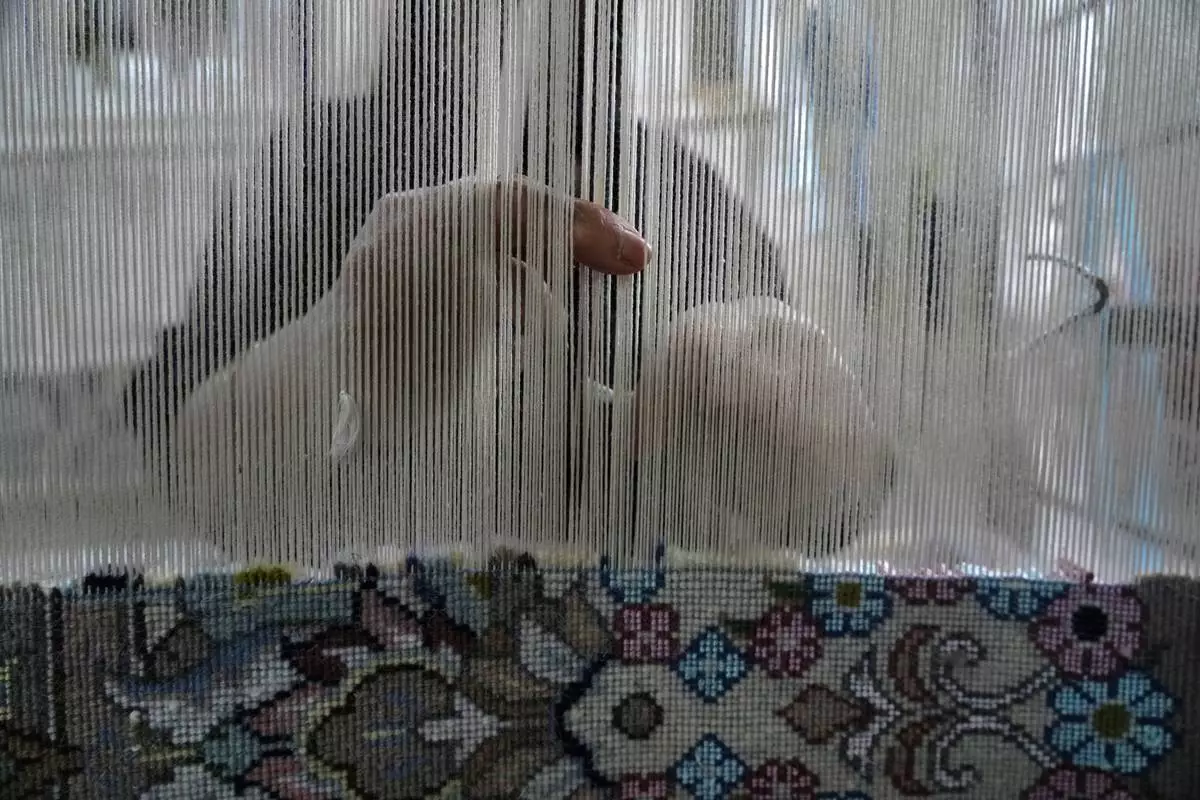
An Iranian woman weaves a carpet at a workshop in the city of Kashan, about 152 miles (245 km) south of the capital Tehran, Iran, Tuesday, April 30, 2024. (AP Photo/Vahid Salemi)

An Iranian woman weaves a carpet at a workshop in the city of Kashan, about 152 miles (245 km) south of the capital Tehran, Iran, Tuesday, April 30, 2024. (AP Photo/Vahid Salemi)
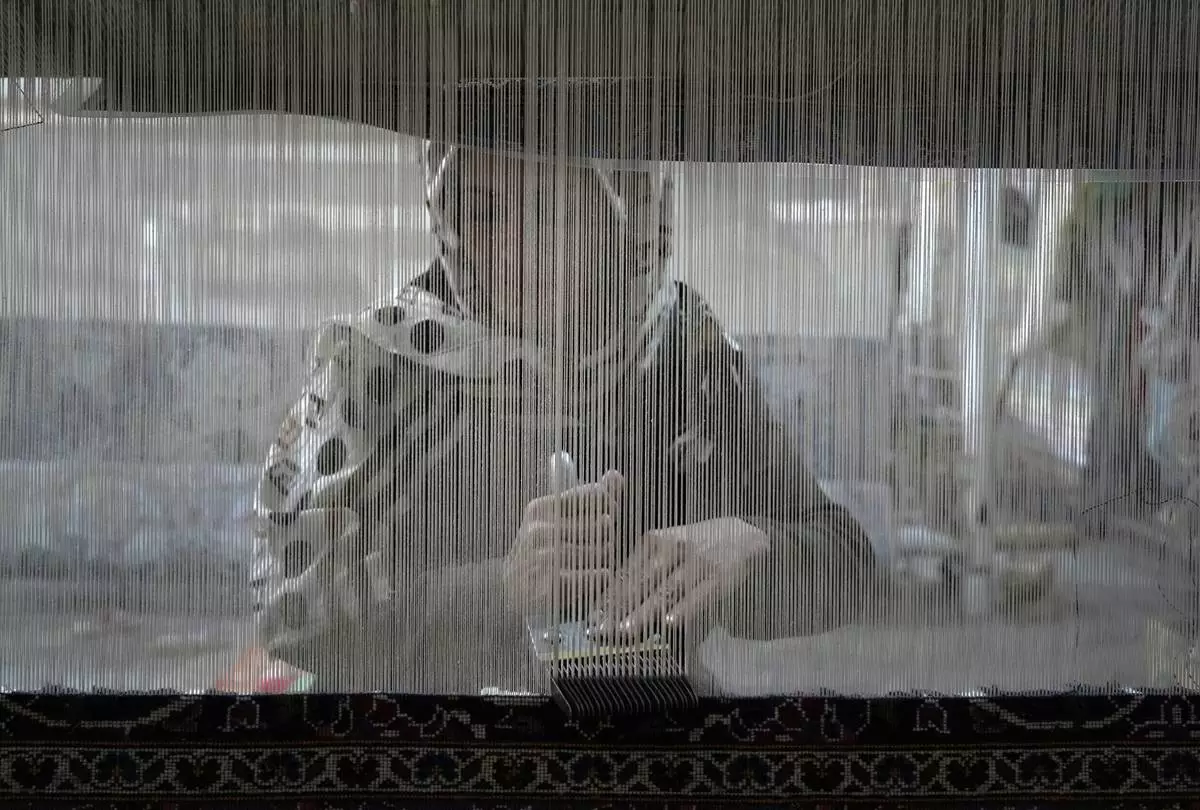
An Iranian woman weaves a carpet at a workshop in the city of Kashan, about 152 miles (245 km) south of the capital Tehran, Iran, Tuesday, April 30, 2024. (AP Photo/Vahid Salemi)
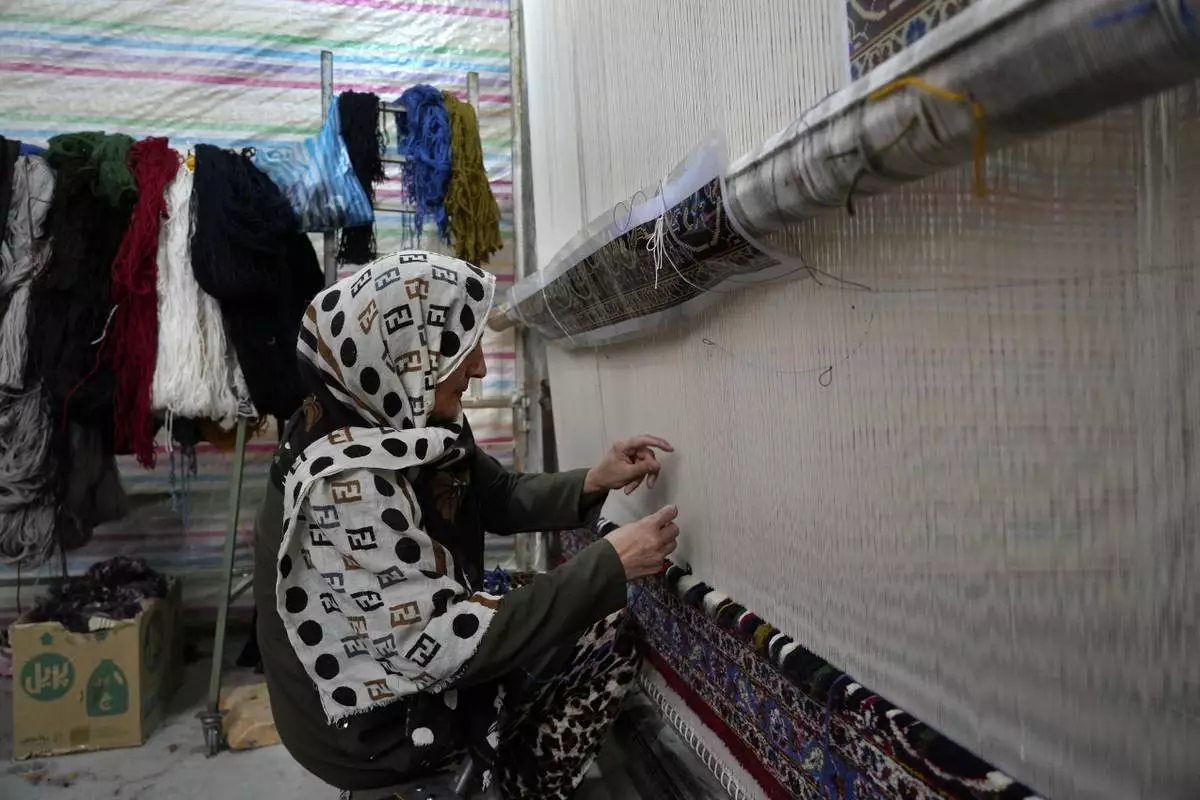
An Iranian woman weaves a carpet at a workshop in the city of Kashan, about 152 miles (245 km) south of the capital Tehran, Iran, Tuesday, April 30, 2024. (AP Photo/Vahid Salemi)

Iranian women weave carpets at a workshop in the city of Kashan, about 152 miles (245 km) south of the capital Tehran, Iran, Tuesday, April 30, 2024. (AP Photo/Vahid Salemi)

An Iranian woman weaves a carpet at a workshop in the city of Kashan, about 152 miles (245 km) south of the capital Tehran, Iran, Tuesday, April 30, 2024. (AP Photo/Vahid Salemi)

An Iranian man carries a carpet at the traditional bazaar of the city of Kashan, about 152 miles (245 km) south of the capital Tehran, Iran, Tuesday, April 30, 2024. (AP Photo/Vahid Salemi)
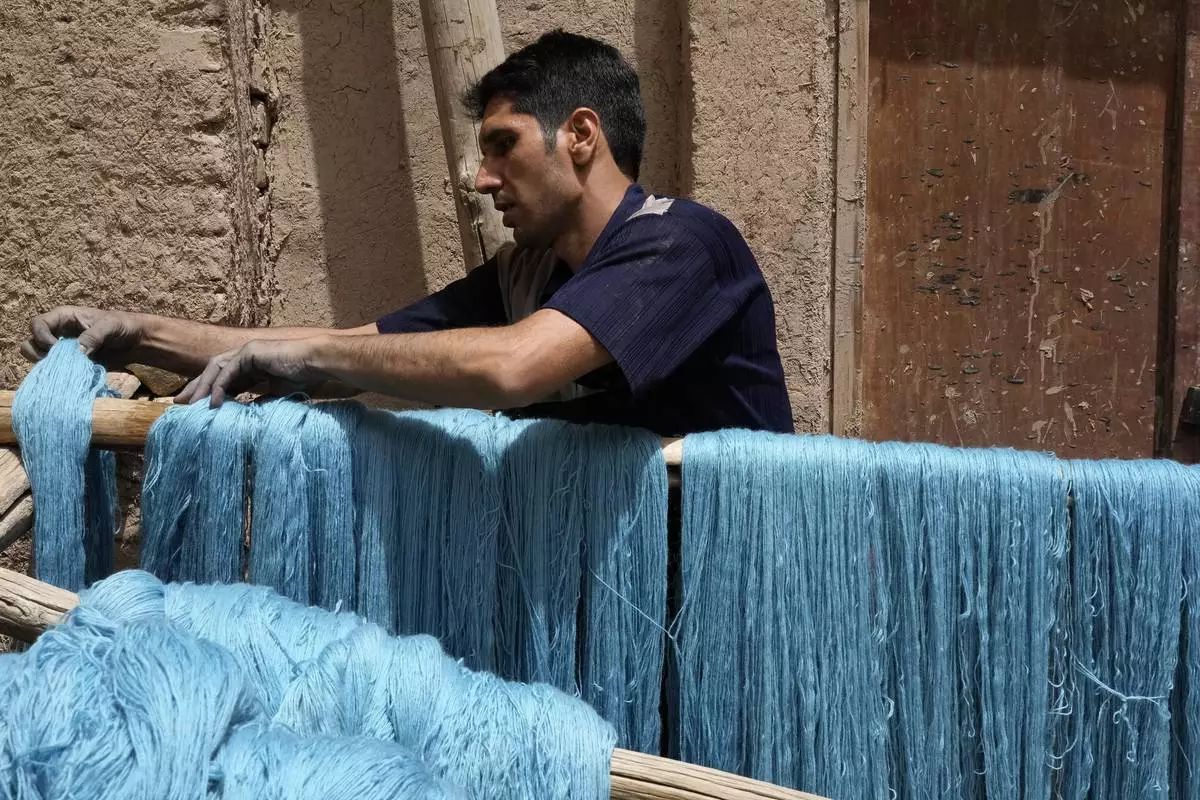
Iranian dyer Alireza Ramezani hangs dyed batches of thread for hand-woven carpets to dry in the sun at a workshop at the traditional bazaar of the city of Kashan, about 152 miles (245 km) south of the capital Tehran, Iran, Tuesday, April 30, 2024. (AP Photo/Vahid Salemi)

Iranian dyers dye batches of thread for hand-woven carpets at a workshop at the traditional bazaar of the city of Kashan, about 152 miles (245 km) south of the capital Tehran, Iran, Tuesday, April 30, 2024. (AP Photo/Vahid Salemi)

Iranian Ali Akbar Sayyahi puts the finishing touch to a hand-woven carpet at a workshop at the traditional bazaar of the city of Kashan, about 152 miles (245 km) south of the capital Tehran, Iran, Tuesday, April 30, 2024. (AP Photo/Vahid Salemi)

Batches of thread for hand-woven carpets that have been dyed are left to dry in the sun at a workshop at the traditional bazaar of the city of Kashan, about 152 miles (245 km) south of the capital Tehran, Iran, Tuesday, April 30, 2024. (AP Photo/Vahid Salemi)
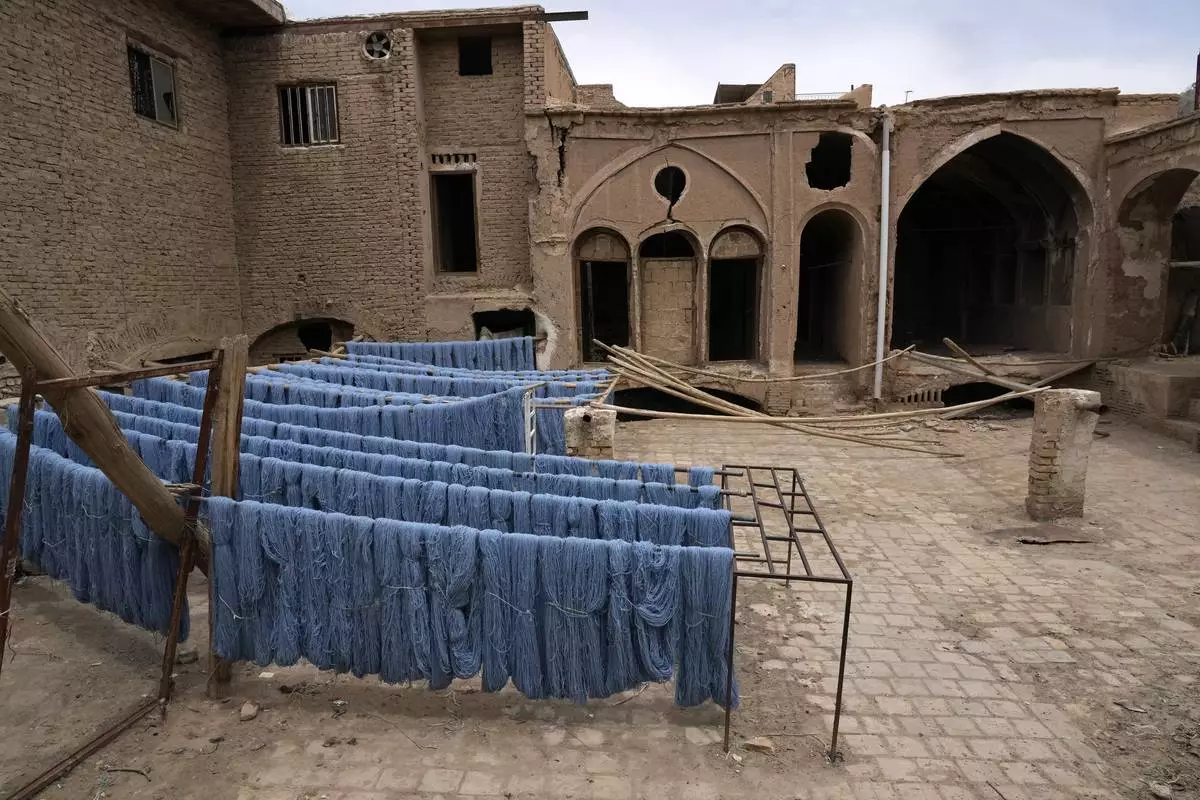
Batches of thread for hand-woven carpets that have been dyed are left to dry in the sun at a workshop at the traditional bazaar of the city of Kashan, about 152 miles (245 km) south of the capital Tehran, Iran, Tuesday, April 30, 2024. (AP Photo/Vahid Salemi)

Iranian carpet designer Javad Amorzesh, one of just a few of Kashan's old-school artists, works at his workshop at the traditional bazaar of the city of Kashan, about 152 miles (245 km) south of the capital Tehran, Iran, Tuesday, April 30, 2024. (AP Photo/Vahid Salemi)

A worker carries carpets at the traditional bazaar of the city of Kashan, about 152 miles (245 km) south of the capital Tehran, Iran, Tuesday, April 30, 2024. (AP Photo/Vahid Salemi)

An Iranian man carries a carpet at the traditional bazaar of the city of Kashan, about 152 miles (245 km) south of the capital Tehran, Iran, Tuesday, April 30, 2024. (AP Photo/Vahid Salemi)
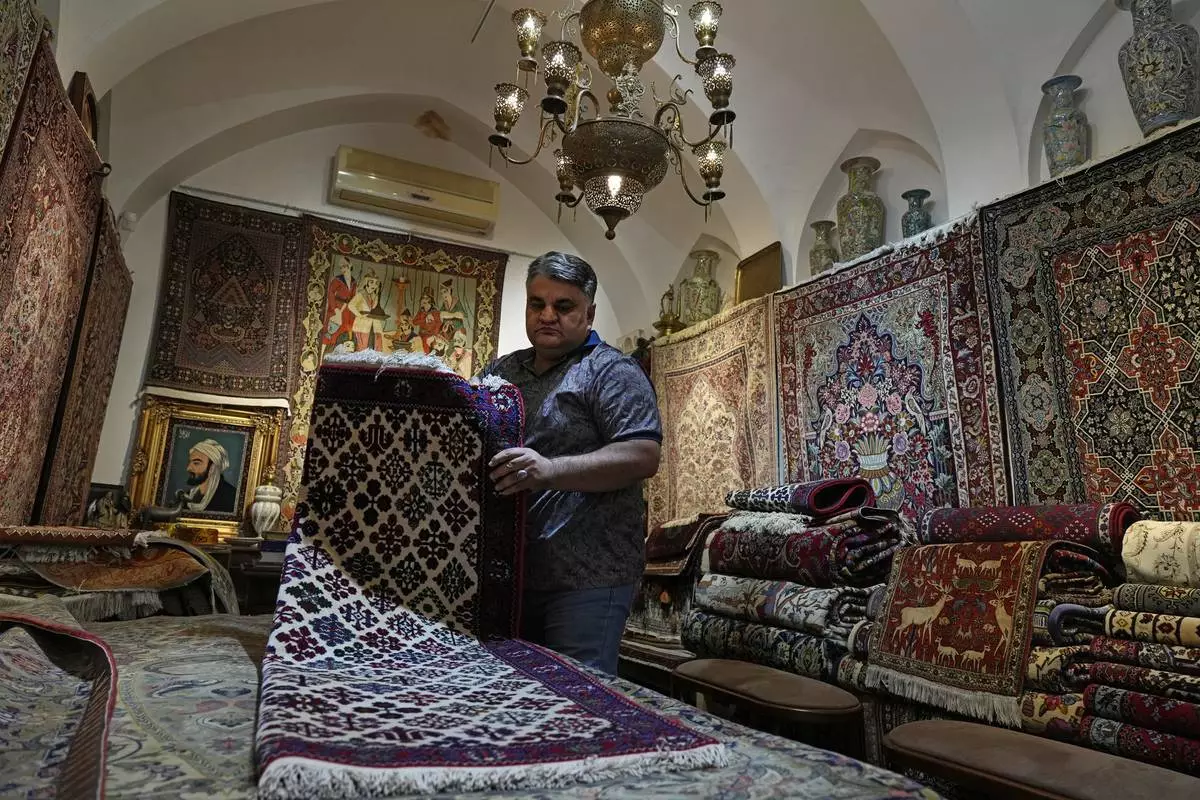
Iranian carpet shop owner Ali Faez works at his shop at the traditional bazaar of the city of Kashan, about 152 miles (245 km) south of the capital Tehran, Iran, Tuesday, April 30, 2024. (AP Photo/Vahid Salemi)























